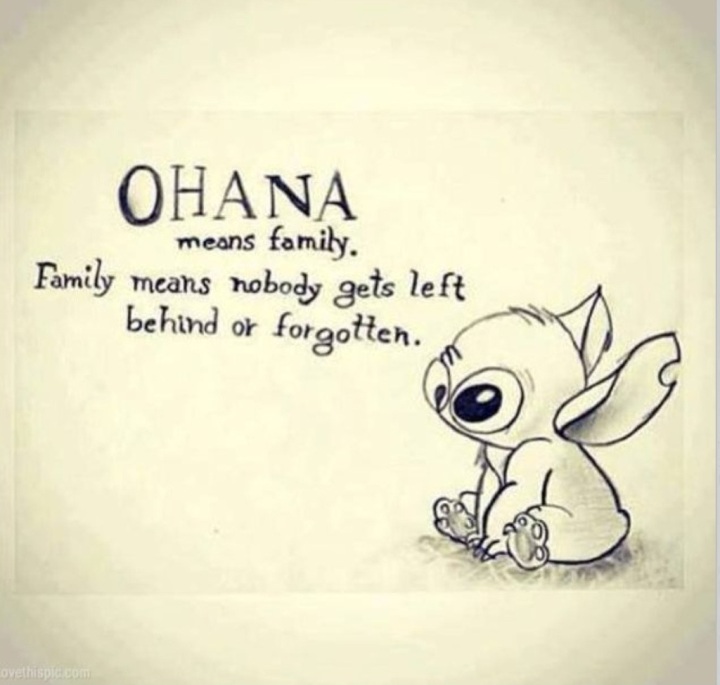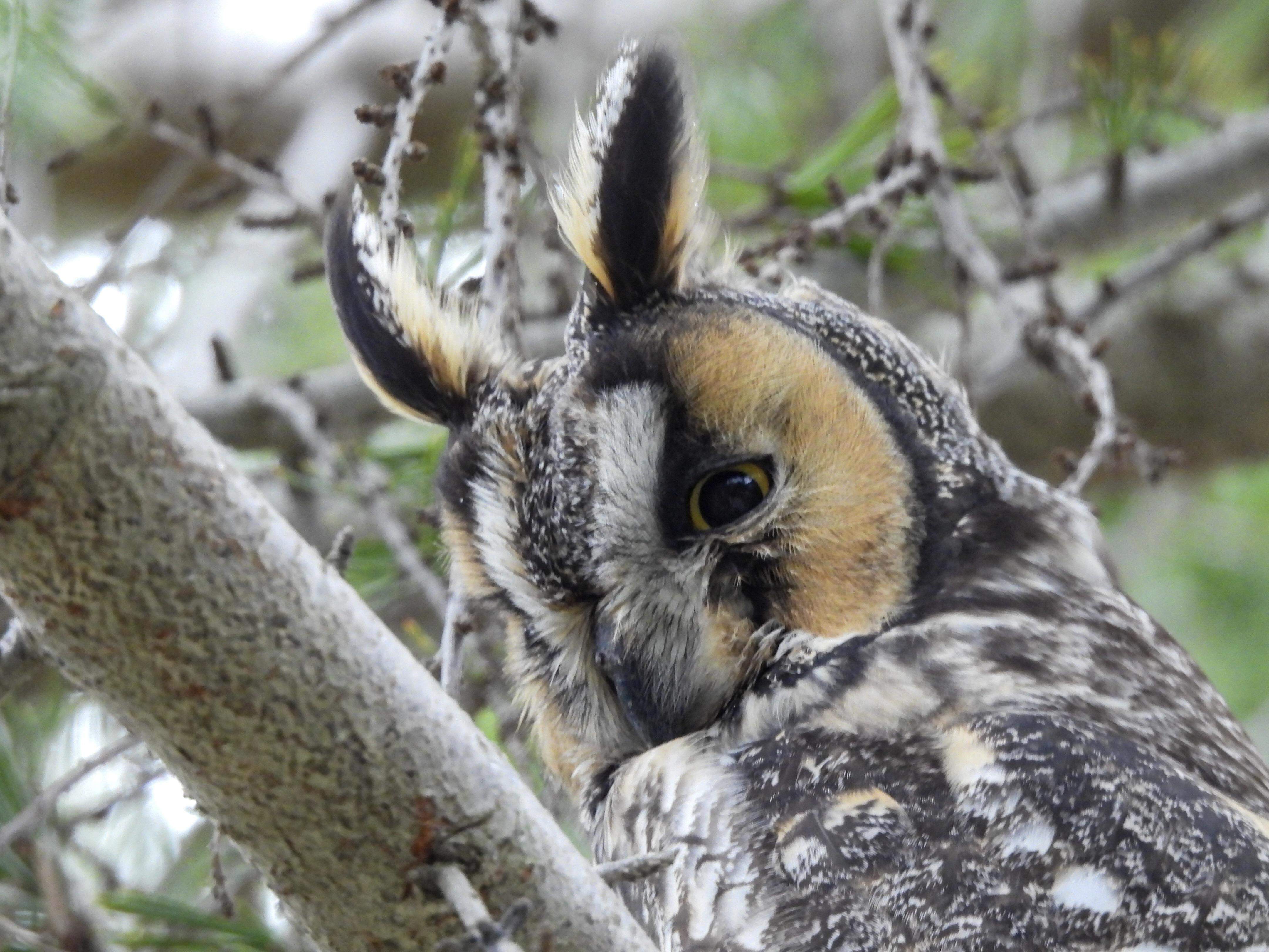This is dumb. Most plants resist cultivation. Bragging about being able to afford them does not make you Superior.
Also yields are important
Resist cultivation or have some other undesirable properties. Often low yield, short harvest, low yield, difficult picking or transporting.
A favorite example of mine: oak’s acorns are sometimes edible. Roughly one in ten oaks produce edible acorns. They are indistinguishable from inedible ones unless you try them out - but inedible ones are fairly poisonous. The gene for edible acorns is recessive and it takes at least a decade before you know if a newly planted oak produces edible acorns or not, with a 10% probability of the former. It is just practically impossible to select for this criterion. Thus, we don’t eat acorns.
Often low yield, short harvest, low yield, difficult picking or transporting.
And let’s not forget, low yield.
Let us not!
Low yield due to overly specific conditions that are hardly met
Low yield due to short production window
Low yield due to long growth time
Low yield just because
Isn’t acorn flour edible after you rinse out the toxins? Some north american tribes did essentially “farm” acorns (They managed groves of oak) and iirc that’s how they dealt with the toxicity.
You just remove the tannins by soaking them, it’s not really a major problem. I tried it before, they were fine but fairly bland.
Acorns are like the easiest thing to forage, though. I agree that foraging isn’t as simple for many people as the OP makes it out to be, but acorns are a bad counter example.
They are high in tannins, which your body is pretty good at processing in reasonable quantities (they’re in tea, coffee, and wine), but many acorns DO have unreasonable quantities of them and they can cause organ damage. Luckily, tannins are water soluble, so you just need to crack them open and soak them in water for a few days, then rinse and they’re safe to eat.
Let the deer and squirrels and wild pigs eat the acorns, then eat the deer and squirrels and wild pigs. Easy!
I thought we eat acorns after processing them? There are cuisines which involve acorns as main ingredient.
Also acorns ain’t particularly nutritious.
Not sure that acorns are inedible. They just need to be processed.
I mean, I think that goes back to the whole “industrial farming” point. If it can’t be farmed, it won’t be commercially available. But there are plenty of plants that you could scavenge, if you knew what to look for.
One of my personal favorite niche plants is osha root. It’s one of the best cures for a sore throat. It tastes a little bit like dirty root beer, and it’ll numb your entire throat when you chew on it. Native Americans kept some around for medicine. You can even grind it up and smear it on shallow scrapes to numb the area. You can find it in teas like Throat Coat, which is a sort of secret weapon for performers and public speakers whenever they have a sore throat.
But it can’t be commercially farmed, because it exclusively grows in the Rocky Mountains where a specific type of fungus helps it thrive. It isn’t commercially viable to market to the masses like throat lozenges, (even though it is just as effective in reducing sore throats) because it has to be scavenged.
there are plenty of plants that you could scavenge
But what happens when “you” becomes a million people? A hundred million people? A billion people? Where I live, we can’t even have a nice field of flowers because a hundred Instagram models will trample and ruin it before spring is over. Scavenging and foraging literally cannot feed the 7 billion human mouths on this planet.
8 billion now.
If it can’t be farmed there cannot be enough for everyone, but it will be exclusive to a select few. How they are selected is irrelevant.
My point wasn’t that commercial farming is bad. With 8 billion people on the planet, it’s a necessity. My point was simply that scavenging to supplant your needs should be more encouraged, and the knowledge should be passed down.
Most people live in large cities where this is not feasible for everyone at once. Also transportation is expensive.
If you have a garden (I recommend far from the street to avoid pollution), some wild plants will grow in it. It’s good to know which ones you can eat and to be able to distinguish them from poisonnous ones. This way, weeding can become a sort of harvest.
Isn’t that what they meant by industrial agriculture preventing widespread use?
I think the point is it doesn’t prevent wide spread use. If a plant resists cultivation then it’s not worth it to try to farm, either industrially or in your back yard. Especially if you’re trying to farm for sustenance.
Lamb’s lettuce superiority! They don’t need cultivation, grow everywhere even if you don’t want them to grow, and they are quite edible, also delicious.
Our current style of industrialized agriculture isn’t viable long-term (meaning: millenia); too much damage to the ecosystem.
It’s the kind of farming you need in order to provide for the high density
rabbit hutchescities that are supposed to save the planetNo, obviously it is just the most profitable, which is the only thing that matters under capitalism. With better planning we could totally use sustainable farming techniques, and have comparable yields.
And I don’t know what you are on about with cities. Cities are the densest, and thus most efficient way of human settlement. Other forms of settlement are less dense, therefore require more land, therefore leave less land for agriculture (and result in higher transportation costs) which means agriculture has to have higher yield per unit of area.
Imagine thinking of population and living as efficiency first and not wellbeing.
City people are crazy lol.
Rabbit hutches are the most efficient way to keep rabbits. They piss and shit on themselves and on top of each other, live sad and miserable lives, and require synthetic food being directly delivered to them. Just like human cities :D
Also, the great thing about not living in a city is the fact you can grow your own food reducing the need for incredible amount of supporting land around you. I barely have to go to the grocery store or farmer’s market for my vegetables.
Cities are sadness and misery factories, and some of the most polluted places humans have ever managed to create.
Imagine thinking of population and living as efficiency first and not wellbeing.
Ultimately if we want for 8 billion people to survive on this planet, we have to be somewhat efficient. If you spread out all current human population to a typical rural density (100/km^2) you get 80E6 km^2, or about all habitable land mass on earth. This leaves no areas for anything but human settlement. What you are advocating for is an infinite sprawling suburbia with not even a national park in between, which just sounds like a hellscape.
This is not taking into account that this will require everyone to use transportation to get anywhere (rather than a well-planned city where all daily destinations are a 5-10 minute walk), and transportation at those scales won’t be efficient either - if we go with cars we get a network constantly jammed, insanely polluting highways, if we go with rail it would either take an insane amount of rail or the “last mile” would actually be 10 km with little to no infrastructure. In any case it would take an insane amount of time when you need to go somewhere uncommon, like a medical professional specializing in your rare disease, or a DnD hangout, or a scientific conference, whatever.
Other essential services will also be very inefficient like electricity (imagine just how much wiring we would need), or water supply and sewage (which requires piping and dedicated sewage treatment facilities), or emergency response (imagine the amount of deaths because we can’t staff enough emergency stations to cover all the sprawl).
I’m not just talking about efficiency in the capitalist sense of profit, I’m talking about the basic sense of the amount of resources required to keep humans alive. We simply will not be able to sustain everyone living in a rural-like setting with a modern quality of life (like access to modern medicine, electricity, running water and internet). There is not enough land and resources on this planet to live like that. The fact that you and other people can do that is because they are (indirectly) subsidized by the city folk, mostly so that there is someone to work all those out-of-town agriculture jobs.
Also, the great thing about not living in a city is the fact you can grow your own food reducing the need for incredible amount of supporting land around you.
If you grow your own vegetables, you’re using more land for your vegetables than if you bought them from someone else, because economies of scale make agriculture much more efficient. And in any case I grow some tomatoes and celery on my balcony, you can do that in a city too with proper planning.
Cities are sadness and misery factories, and some of the most polluted places humans have ever managed to create.
Have you ever been to a well-planned car-free (or at least less-car-infested) city? It can be a quiet cozy place with lots of communities forming, lots of green spaces, and access to nature within 10-15 minutes by train. The thing you hate about cities is probably not cities, it’s cars and car-centric planning with suburban sprawl (which is ironically what you seem to be advocating for).
I’ve also lived a big chunk of my life in the forest, and I wanna do that again because I like forests. But I won’t pretend it’s sustainable for all humans to live like that. This must be the last refuge for those who truly love nature and/or want to work agriculture, which is a very low percentage of the overall population.
I harvest stinging nettle to use as a spinach replacement
I’m going to try to make maple syrup from big leaf maples this year too!
I mostly eat spinach now for potassium, but I just looked it up and stinging needle has only 25% lower potassium content than spinach, so at least for my use case it seems like a fairly good substitute seeing as how well stinging needle grow.
How do they taste? Do they not, uh, sting with the little spikes?
I got then popping up all around.
If you cook them they stop stinging.
My mother makes pasta with them too, puts them in the dough.
I blanch them and then freeze them. So no stinging!
How to harvest, dry, and make tea with nettles:
https://slrpnk.net/comment/16978019
If you have arthritis or hayfever they’ve been shown to help with that. Science has confirmed the old wives tales traditional herbal remedy works for this one. Not as effectively as modern medicine of course but if it’s all you can afford, or whatever, then something is better than nothing.
if you crush them, or flatten them, they don’t sting.
You can make them into patties and fry them up, surprisingly good.
You would harvest the leaves when they are small and young. And they would be one of the first fresh greens available in the spring. But their season quickly passes as the plants grow pretty fast.
I mean there probably are lots of reasons why we farm only certain plants.
For example dewberries have short harvest window and as far as i know they need to be hand picked.
There are many reasons, but it all comes down to economics: how easy and cheap it is to farm and harvest, yield size, does it require refrigeration during transport, what’s the shelf life, etc. Unfortunately optimizing for economics rarely pairs well with user interests, e.g. How nutricious the food is.
Which is why until modern farming some of the most nutritionally balanced people’s were hunter gatherers and pastoralists. The big advantage of farming vs ranching or pastoralism is that you can feed a lot of people for relatively little work, this rule of thumb is still true it’s just that we can now do it on such a massive scale that a lot of the downsides have simply been overwhelmed.
About shelf life:
There’s this weird little apple tree, Prime Rouge. Every two years, he’s choke full (the other empty) of perfectly formed, perfectly red apples, optical flaws are rare. They are already edible in summer but get really succulent taste and a white flesh about two months later. The best apple breed i know, in texture, taste and look.Buut they only keep about two months max, unlike the other breeds you have in your supermarket.
Yeah, some apples I bought recently weirdly last a long time. The reason I know is that they tasted bad so I didn’t feel like eating them…
Even if two species existed that had similar soil, water and sun requirements, had similar properties regarding taste, processability, etc., it would still be easier to farm just one instead of breeding both for milennia and splitting the means of production.
Until a disease pops up, that targets your only crop. Example A: bananas.
Blackberries are pretty rampant here in the UK. Always wondered why you guys didn’t have it- Seems they were banned in the US until recently due to some fungus.
Just to be clear, you mean blackcurrants, yes? Blackberry means something quite different, at least over here.
No I meant blackberries. We have both over here commercially available.
Ok, well I assure you, blackberries are, and never were banned in America. Blackcurrants were.
Oh my bad
Yeah, I pick some every year. Also cherry plums grow quite a bit near me, along with some apple trees and loads of sloes.
Or why don’t we use all our technological, scientific and research knowledge to good use and engineer fruits and vegetables that can grow in less hospitable environments and can grow larger yields, have a longer growing season and have plenty of nutritional value.
Instead, we use all our knowledge and ability to build bigger, faster, more deadly weapons of war or AI that can micromonitor everyone’s lives or create slop and porn.
We do both. The problem is corporations and stupid people. See Monsanto, the non-GMO push and the results of golden rice or similar.
I meant create a food crop that is actually beneficial to humanity … not some empty nutritionless white styrofoam or equally terrible frankenstein corn that simultaneously destroys the land and the people who eat this so called ‘food’.
golden rice
What’s wrong with golden rice?
Golden rice is an example of a GMO that’s actually beneficial to humanity, or would be; anti-GMO sentiment has kept it from being grown in any significant amounts.
It’s tweaked to produce vitamin A, which rice normally does not; deficiency is a common problem in places where the poor get most of their calories from rice
Nothing really it’s a GMO that was created to fill a vitamin deficiency in some parts of Asia. Can’t remember what vitamin it was though, absolutely brilliant success of a crop though. Funny enough some of the research on it may have used my 2x great grandfathers work as a baseline since he was working with some folks to do something vaguely similar with millet back in the early 1900s. It went nowhere but did lead to some success for his orange groves though.
In a vacuum, nothing wrong with it. It was just bound to fail because it tried to fix a problem caused by poverty.
Hi, I’m engaged to someone who studies chickpea and other legumes. Shitloads of money goes into agriculture every year and from my understanding, what you’re describing is being done by some brilliant people (I’m a bit biased). However there’s so many concerns around GMOs doing damage to the environment that it is tightly regulated. Doubly also, Americans don’t have the same ready access to grocery stores that
otherfirst world countries have.Plus the equivalent of flat earthers exist that believe that GMOs will kill us all and we need to go back to eating only what nature created (somewhat hyperbole, there are valid concerns but people have been irrational).
An example is that chickpea and other legumes reintroduce nitrogen into soil after the soil loses vitality, which makes chickpea a good intermediate crop that can be grown in between others. Its high in nutrients and has good yield. So yeah, stop eating corn and eat legumes/chickpea/hummus.
(I’m not the molecular biologist so if I got stuff wrong, sorry, I will pay more attention when my partner speaks)
I remember reading years ago that a vegetarian diet is far more economical and sustainable than a meat based diet. Which is why I lowered my meat consumption years ago. I still eat meat, just not as much as I once did when I was younger.
Even if humanity didn’t cultivate new vegetables and fruits, the produce we have now is more than enough to feed the planet. I think I remember that it takes just a few acres of grown produce to feed one person per year if they ate a vegetarian diet … whereas it takes ten times more land area to feed a single cow to feed that one person for a year in meat and vegetables.
I try to eat my legumes, especially lentils, since they are high in protein … but by far the greatest benefit that a vegetarian diet provides is the health benefits from the consumption of fiber alone. Full vegetarian or high vegetarian diets all around are far healthier and sustainable for humanity and the environment.
There is one thing that people miss about that whole “10 acres to feed one cow” statement. Yep, it can take that much land. But what doesn’t get said is that one cow can take advantage of land that is unsuitable to grow crops on like tomatoes, peppers, and onions.
In the US, California produces more fresh produce every year than any other state can. But it comes at a high cost of farming land that really isn’t naturally suitable for growing those vegetables. Farmers need to pump millions of gallons of water on those acres to get those crops to grow. This in turn puts pressure on the supply of water to everyone else in the state. And much of this farmland had all it could do to grow grass in some years originally.
Aquifers are going starting to go dry because of this. The vast Ogilala aquifer that supplies water to almost all of the US west is starting to go dry. Because we now are farming land that probably be best left to growing grasses for cattle, sheep, or goats rather than tomatoes or soybeans.
The other research I remember from my reading about this subject years ago was the efficiency of industrial farming. Per acre, industrial farming produces very low or minimal yields … whereas an acre that is tended, micromanaged and monitored by small scale farmers has much high yields. It meant that the only way for industrial farms to be able to produce large amounts of produce is to farm huge acreages in order to make up for the losses or inefficiencies.
One of the reasons why the Californian desert is drying up is that industrial farming is so inefficient that in order to sustain itself as a business model is for it grow ever larger and more invasive … it needs more land and more water in order for it to continually grow as a business. It’s not a way of farming that is meant to produce food efficiently for people … it’s a type of farming that is meant to produce profit, money and control for a corporation.
It’s feeding a monolithic corporation … it’s not feeding people.
All our world problems including global warming, food production, water supply are manageable and can be dealt with to help people in very efficient and possible ways … all of it is hindered and complicated by the fact that corporations sit in opposition to all of it because of their ever wanting need to turn a profit, even if it means destroying the environment and everyone who lives in that environment.
I hate that i cant find anywhere studies that takes the manure used as a fertilizer account in their calculations. Atleast where i live 100% of the manure from the animals is used as a fertilizer on farms and store bought fertilizers are just supplement. Most countries cant produce fertilizer enough for their agricultural need and need to buy it from outside.
I would love some real research wich would be better for the enivorent. Stop meat produsing completelly or scale it down so farms get still some benefits like fertilizer and biogas for the vehicles, but people would not eat food on every meal.
Im not geneticist, but i grew up on a farm. I always grind my teeth when people talk about miragle plants with high yields.
The plants need to get their energy and nutritions from somewhere. If you just create gmo plant that can absorb nutrition better from soil it also means you need to fertilize that soil that much more and make the crop rotation that much faster, or risk making the fields arid.
But plants that survive larger temperature shifts, more extreme weathers and pest might be necessary for us in the not so far future. Lets just hope in the future those are used for humanitys betterment and not making rich richer.
Eat your weeds… This is Common Purslane:

It grows mostly everywhere and is a huge source of Omega 3 fatty acids. It’s much better cooked in my opinion. Also it’s best to find them in a field and not by the roadside where it may be leeching up god knows what hydrocarbon adjacent type of poisons.
Omg people can eat these??? My horse goes absolutely crazy for these things
Now I gotta try some and see what all the fuss is about
I want to see your horse face when it sees you eating it!
She’d probably be very offended that I ate her snack lol.
I pulled so many of these boogers out of the garden this summer
I think I have these in my yard. The ones I have grow along the ground like vines almost, strong stems and such. I’ll have to check when I get home but thats really cool, thanks for sharing!
There are fairly similar plants, so make sure to do your research. I get similar plants each year in my garden but I know they’re not purslane.
Gotta make sure it’s actually the edible specie tho.
Why is there a crummy phone ad in your picture?
Samsung’s pre-installed camera apps do that by default, I believe, unless you spot it and go digging where to turn it off (which seems do differ between some models, if I recall correctly)
Ok I’ll bite (literally), how does a person break into this niche, since it is definitely not a market? My engineering degrees did not heavily cover edible plants in my area? I can go find morel mushrooms and identify sassafras but that about covers it.
If I could buy like a ring of +4 to local botany that would be best I think.
On android you can use an app called “PlantNet” to take a picture of a plant and find out what it is. I’ve learned about many of the plants growing around me this way and have found new edible things. Garlic mustard is a good example. It’s invasive but edible and pretty good, so eating it is also protecting local ecology.
Please do not consume plants based on a visual ID by a convolutional neural network. It’s a dangerous and fundamentally flawed approach. Many plants can only be properly identified by observing specific parts that don’t turn out from a single angle photo, such as formations on the underside of leaves, or a specific curl direction of a flower stamen etc. etc.
Well, yeah if you want to eat something you want to be sure. Even if you only take one photo, you can look at pictures of the leaves, flowers, and fruit. There’s a link to other sources, like Wikipedia, where you can get more info.
The app allows you to take several photos, label those parts (“leaves”, “flower”, etc.), and then you get several results, sorted by correspondence according to the neural network. When you click on a result, you get photos of different parts of the plant, allowing you to compare to your plant and judge if they’re the same.
In now this app and I use it but I agree with the previous comment. PlantNet should be an aid. One among many clue helping you getting the ability to recognis on your own which plant it is. Then we you don’t need PlantNet to recognise the plant 200 % and to say “It can only be this plant because of Z, of Y and also of X”, only then you should eat it.
Otherwise, your playing with fire. That is your health and potentially your life.
Chanterelles and at least some species of Leccinum are pretty good too.
Look into local berries. Maybe something is edible.
Best is to find people who live off the land and still remember what their forefathers taught them about edible plants or mushrooms. If you’re in the US and have a reservation nearby, maybe they keep the old wisdom alive? Idk I’m not American, the only thing I got off a native American was weed.
In countries where there are people dedicated to keeping tradition alive, it’s easier to find someone to ask I think. Here in Estonia a lot of people collect mushrooms and shit, so a lot of passionate people to ask about their hobby.
For those in the UK: https://www.wildfooduk.com/
For me, it helped expand my cosmos by leaving things out and looking for alternatives.
Like, I found out about a world of legumes by going vegan. And earlier this year, I stopped eating wheat for health reasons, and only then started to appreciate the existence of millet, quinoa, amaranth, buckwheat etc…I am probably still within the range of “usual” foods, all things considered, but at least I’m breaking out of a tiny subset of those…
I recently found out you can eat nettles (the ones that sting you), and they actually taste nice.
lots of iron in them
Can make tea out of them aswell
Nettle and potato soup is delicious.
Gotta try that thx
Good source of potassium as well. Although you’d need to eat 1.25 kilo to reach 100% recommended daily intake.
What’s the definition of “good source” employed here?
I’m basing it on spinach which stinging nettles is only 25% worse than on potassium levels. I think a baked potato might be twice as good though, but I think I’d rather try and eat 1.25 kg of stinging needles in a day than 625 gr of baked potato.
I don’t think most people even consume 1.25kg of food in total per day. It seems implausible that one would have to supplement with a substantial quantity of 0 calorie greens just to get enough of a common and essential mineral. Which makes me think that the K content is average at best and rather less than common food stuffs.
Common… as in grocery store or as in laying around outside for free?
Grocery store.
Assume that all the foodstuffs that people normally eat have the same potassium content as these nettles. Then you’d need to consume 1.25kg of your normal food per day to get enough potassium. Someone who consumes less than 1.25kg of those normal food stuffs would not get enough potassium. If normal food stuffs have a significantly lower potassium content, then you’d expect widespread potassium deficiency.
Maybe, but it doesn’t seem to be a serious public health issue. So common food can’t have significantly lower potassium content than those nettles. What with averages being averages, some foods will have more than others.
is that 1.25kg raw or cooked down? because raw isn’t actually that much, it’d cook down to like 2 micrograms following the law of leafy greens
They make a nice tea.
“ CaPiTaLiSm bReEdS InNoVaTiOn “
Tbf, many are kinda disgusting to modern palettes. Lamb’s quarter sucks compared to stuff like spinach, kale, or collards. Pokeweed needs extensive preparation to make it safe. Wood sorrel, horseherb, and prickly pear grows where I currently live, but I haven’t tried them yet. My dog likes horseherb despite the little spines for some reason. My grandmother used to fry dandelions and plaintain which was pretty good.
Wood sorrel is an interesting case. In the US, we don’t commonly eat our native wood sorrel, i.e. the thing that looks like clover. But we do eat starfruit. Starfruit is also a type of wood sorrel, just one that has a much larger, sweeter fruit, that’s been selectively bred for agriculture. But if you look at the fruits of our native plant, they do look like tiny starfruit! link
They’re still tasty. They’re very tart, but with no sweetness. They could be good to top a salad. But you’d have to pick hundreds of them to get as much food as you get from one starfruit, and it wouldn’t be as tasty as a fruit. Like eating a lemon instead of an orange.
That said, I still love them! The leaves and stems also have a good taste. They’re everywhere and have a lovely burst of flavor. Just be careful if you have kidney stones or kidney disease, any kind of wood sorrel - including starfruit - has oxalic acid which can be tough on kidneys.

Toxic web.
Got the same in the UK, had to disable uBlock for Cloudflare to let me through.
For another example of a plant that just didn’t make it into modern society at scale, there are skirrets. Carrots, parsnips, and skirrets were related umbellifer plants with edible, nutritious roots, cultivated over the centuries as food. Carrots and parsnips were responsive to breeding for root size, and could produce comparatively huge roots, but skirrets never really did. Once the potato was brought over from the new world, the skirret fell out of favor.
I always find it interesting when comparing cuisine between cultures of stuff that exists in different places but only eaten in one (or a few) of them. Like ok, I get that if you’re not used to much seafood in general you maybe will eat some grilled salmon but you’re not gonna be eating the guts out of crabs or lobsters or whatever. But then there’s something like burdock root, which grows in the US, doesn’t have a strong taste, and is just like various other root vegetables we do eat (although not as sweet as something like a carrot). But the US doesn’t eat it while east Asia does.
How do you get dandelions to not taste like poison?
She made something like this: https://www.allrecipes.com/recipe/214172/fried-dandelions-appalachian-style/
Oh! I will get to taste appalachian cuisine (*_*) Thank you !
Oh, the flowers. The leaves are edible and even taste good aside from the bitterness
Every September, I make a year’s supply of beautyberry jelly.
I do something that I don’t recommend people do: I can it. I’m like 5 years in, and I haven’t had a problem yet. There’s a series of pages in my Ball canning recipe book that the beautyberry jelly recipe I use conforms pretty close to, but it isn’t USDA approved or otherwise published by some authority as safe for canning, I’m going to recommend you avoid this.
Beautyberries, if you’re not familiar with them, are a bush/shrub native to the American southeast. The plant looks like a bunch of stems with leaves that grow along them, along with clusters of tiny white flowers in the spring at the base of each pair of leaves, that turn into vivid purple berries in the fall. The leaves can be used as a mosquito repellent if rubbed on clothing, and the berries are edible…although they’re bitter and astringent. Boiling them in water to make an extract and making jelly from that extract results in a bright red jelly that tastes like strawberry and tea.
It’s something of a pain to harvest, so it pretty much isn’t commercially done.
Everything I’ve seen from Ball/Kerr has been safe canning recipes! Love their stuff, use their website for recipes often.
Oh I’ve misread. You picked a berry close to it and are substituting that in, yeah? I’d try it on myself but probably wouldn’t give it away.
Sounds like a beautiful jelly though!
Yes, I have Ball’s Complete Book Of Home Preserving (which is a terrible title, as the book contains no information about dehydrating, freeze drying, jerking or brewing, only water bath and pressure canning). It has a procedure for “berry” jelly where it lists half a dozen different kinds of berries and how to extract juice from them, to include elderberry, and then you use a quantity of said “berry” juice in a standard jelly recipe. Independent of this, I’ve found a beautyberry jelly recipe that resembles this procedure, so I feel okay canning it, and have done so for years now. I’m going to stop short of recommending it to anyone else. By all means, if you’ve got access to beautyberries, make the jelly, but can it at your own risk.
No beautyberries here! Tons of wild grapes though. Horrible producers those are though. All vine and no grapes!
Paw paws grow naturally in the area I live and are a delicious fruit. Due to cultivation and transport issues you will never find them in stores.
I love seeing the explosion of interest in pawpaws over the last decade. They’re very good, a bit of a cross between mango and a banana. I’ve actually seen them at a local fsrmers market this season, I was pretty surprised.
My dad has a tree in his garden, and a friend has made pawpaw moonshine!
My grandpa had a pawpaw tree in his garden in rural MO and I always wondered how they taste.
which is why we need to normalize street markets like most tropical countries have, sure you can’t buy it at the store but you can buy it from a dude who went into the forest with a big basket a few hours ago.
Transportability is a huge consideration. Pawpaws can’t be transported nationally, for example. The plants we eat have been bred for maximum marketability, which includes getting the produce from where it grows to where people need it.
Exactly. Instead of complaining people can just grow them themselves. It’s not like commercial growers have a monopoly on growing food.
Otherwise this is a typical lemmy complaint. Someone who isn’t me didn’t do a thing I like. That makes someone else besides me bad. If there are things you want to exist in this world then you have to do things. This realization is real adulthood.
I planted my garden this year and then had that realization, so I divorced my husband and lost my garden. I went back and grabbed all the veggies from it 3 months later: some small potatoes, some peppers, small onions, and I grabbed my baby strawberry plants that survived the summer without regular watering. My ex has admitted he let my garden die. Be the change you want to see in the world
My daughter is kind of becoming a horticulturalist and recently taught me that sumac (there are non-poison varieties) can make something akin to lemonade if you dip the berries into water and then filter the water back. They have a citric-acid-like outer shell that dissolves in water.
And we’ve eaten so many mushrooms and stuff - thanks to communities on the internet who have categorized lookalikes, where to steer clear of certain types (white mushrooms, don’t even bother. Half of them will kill you)
For Polish speakers theres this book by prof. Łuczaj: https://lukaszluczaj.pl/dzikie-rosliny-jadalne-polski-pelny-tekst/ - every plant that grows in our region and can be eaten. In some more edgy cases backed by his own experimentation on himself.
Does he also document the fuckable plants? I’m asking for a friend
Oh boy are you in for a surprise…

There’s his “Sex in the great (grand?) forrest”. Its about best plants to fuck on (or under). Mostly. As side notes it does point out some local plants in particularly interesting shapes, or some one might rub themself against… This guy is commited. And also an actual true professor on an actual university.
Wow, you did not disappoint.
Just happened to have it… because of reasons.
Non-vegans when you let them know there’s more you can eat outside meat and dairy products
I can’t say I know anyone that loves on an entirely meat and dairy diet.
Even I eat potatoes sometimes.
That sounds like a malnourished human

I tried it for a couple of months. I felt great on it, but it got really fucking boring
I’ve heard before that people feel good on a carnivore diet at first, but then it flips into the negative pretty quickly as your body runs out of vitamins.
Wikipedia lists even more drastic long-term problems: https://en.wikipedia.org/wiki/Carnivore_diet#Health_concerns
It also raises levels of LDL cholesterol, which increases the risk of cardiovascular disease.
This is completely ignoring that there’s multiple varieties of LDL cholesterol, some of which are benign. And basic blood draws don’t differentiate them, you need more detailed blood tests.
They are also low in dietary fiber, possibly causing constipation.
Dietary fiber is not an essential nutrient. Not only that, when I went carnivore for 2 months, after the first week of acclimation I was more regular than I have ever been in my life.
A carnivore diet high in red meat increases the risks of colon cancer and gout.
The study referenced is an epidiological study based on surveys of people that were asked to recall what they’ve eaten for the past 30 years. This resulted in clearly erroneous data where average daily calory intake was wildly off from average human requirements.
And you’re not supposed to draw conclusions from epidemiological studies with results lower than a 100% risk increase (aka doubling risk). The result of this study was 18%.
At best, this study should have been used to propose a more focussed double-blind study on the subject. But they didn’t. The WHO should be ashamed for platforming this trash study as if it’s 6-sigma physics results
The high protein intake of a carnivore diet can lead to impaired kidney function
The amount of protein that you’d need to eat to make this a problem is far beyond what a normal human could eat in a day. You’d die from rabbit starvation before it’d get that far. This study is like the one rat study claiming that asperthame causes cancer, but they were giving the rats 1000x the dose a normal human would consume if you corrected for body weight.
basic blood draws don’t differentiate them, you need more detailed blood tests.
You can get pretty close with a standard lipid panel: the TG/HDL ratio < 2, is strongly correlated with insulin sensitivity and LDL being pattern A (the undamaged, good type).
And you’re not supposed to draw conclusions from epidemiological studies with results lower than a 100% risk increase (aka doubling risk). The result of this study was 18%.
Epidemiology cannot establish causation in any circumstance, but if the hazard ratio is > 4 (so 400% risk increase) then further studies/interventions are warranted. This is why epidemiology is more accurately called hypothesis generating. But yeah a 1.18 hazard ratio is such low noise it doesn’t warrant further study, only people with agendas try to use such a low noisy signal for political ends.
The WHO should be ashamed for platforming this trash study as if it’s 6-sigma physics results
!!!
You won’t go low on vitamins if your carnivore diet incorporates organ meat. Most people don’t want to do this however. Liver isn’t terribly popular, kidneys and other organs even less so.
Yet that are very tasty. But just like for plant people don’t want that many variety in their diet.
None of the Wikipedia claims are based on reproducible science, at best the justification is weak epidemiology with weak hazard rations and not controlling for carbohydrate consumption.
There is no nutrient deficiencies on a carnivore eating pattern, with zero carbohydrates, the nutrition from fatty red meat is complete
Agreed. And I’m going to expand on your comment a bit.
A lot of people like to argue that you’re not getting enough vitamin C on a carnivore diet, but that’s not true. There’s some details that most people aren’t aware of.
Glucose and vitamin C have very similar molecular structures. So similar that most mammals are capable of synthesizing any vitamin C they need from glucose, which can in turn be synthesized from protein. A side effect from this similarity is that vitamin C and glucose are absorbed via the same pathways, so a diet that’s high in glucose will result in less vitamin C absorption due to crowding out those pathways.
Because of this, if you’re not consuming a lot of glucose, you don’t need to consume as much vitamin C because you’ll absorb a higher percent of it. Not only that, on a carnivore diet you’re avoiding some compounds like oxalic acid, which significantly reduces absorption of several vitamins and minerals, such as vitamin C, magnesium, potassium, etc. Oxalic acid is found in most leafy green vegetables.
Also, there’s small amounts of vitamin C (alongside every other necessary vitamin/mineral) in meat, particularly beef. Not a lot, but if you’re more efficient at absorbing it it ends up being enough.
Granted, I don’t personally recommend the carnivore diet because 1: it’s boring, 2: it’s expensive, and 3: you need to do more research than what I’ve stated here to avoid problems. But regardless, it is doable.
But if you want most of the upsides without as much hassle, I’d recommend just going keto. You get 90% of the benefits, you get more variety in your food, and you can even make it vegetarian or vegan if you want.
Great write-up, thank you for taking the time, I liked reading it
the carnivore diet because 1: it’s boring, 2: it’s expensive, and 3: you need to do more research than what I’ve stated here to avoid problems. But regardless, it is doable.
As somebody doing carnivore, I don’t think it’s boring.
When you remove all of the plants from your grocery shopping, I don’t even think it’s more expensive. It’s about the same price. You’re not buying all that other stuff.
As far as research goes, I would agree for getting started, it’s a really good idea to follow somebody’s program, especially around electrolytes for adaptation. But if you are eating red meat and no sugar, and electrolytes, I don’t think there’s any negative problems you need to avoid
I’m a vegan and I barely know about all this stuff. I love all the tips everyone’s sharing here though!
there are some other problems too. I would love to scavenge or grow things here, but the town I live in is basically built on a gigantic industrial waste dump, so eating anything out of the ground here is a bad idea.
That’s what the government says. But I know the truth - I know it’s the queers! They are in it with the aliens to build landing strips for GAY MARTIANS! I swear to god!
I like you Stewart, you’re not like the other people. Here in the trailer park.
























